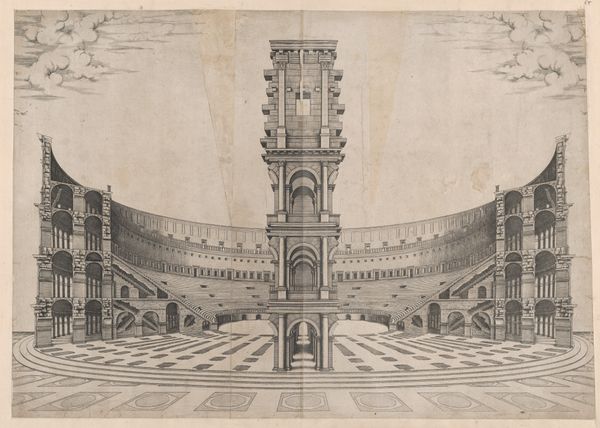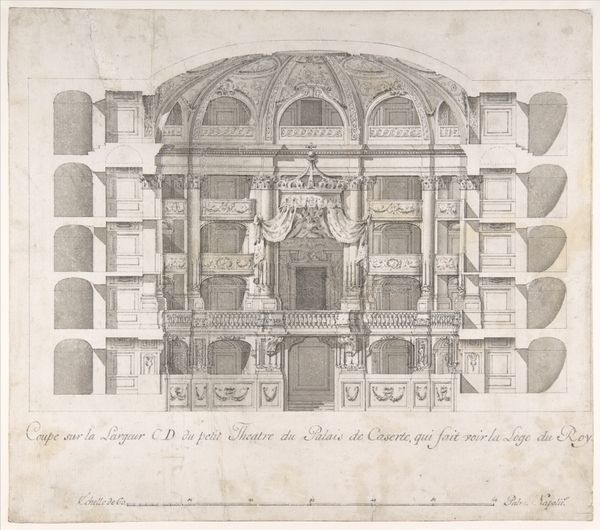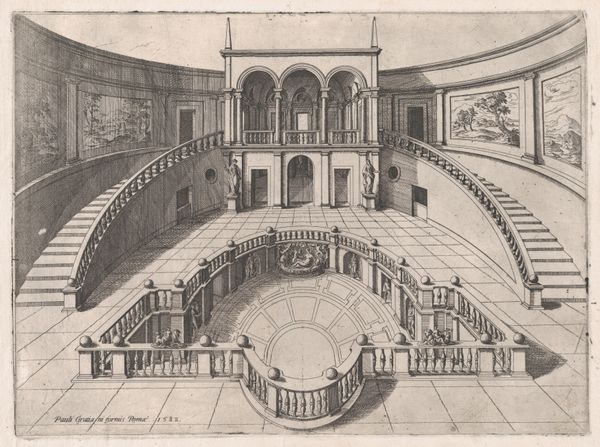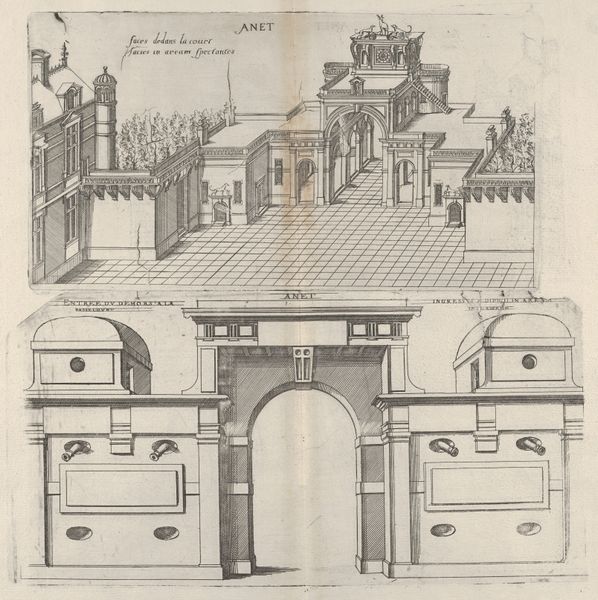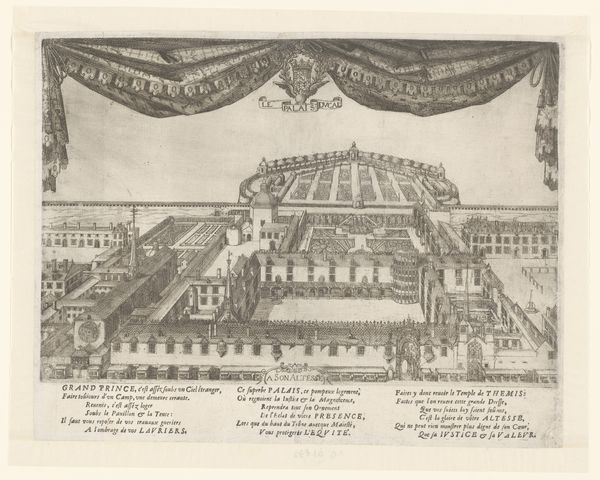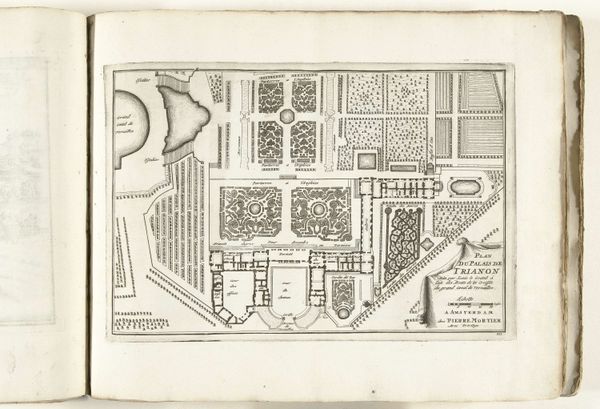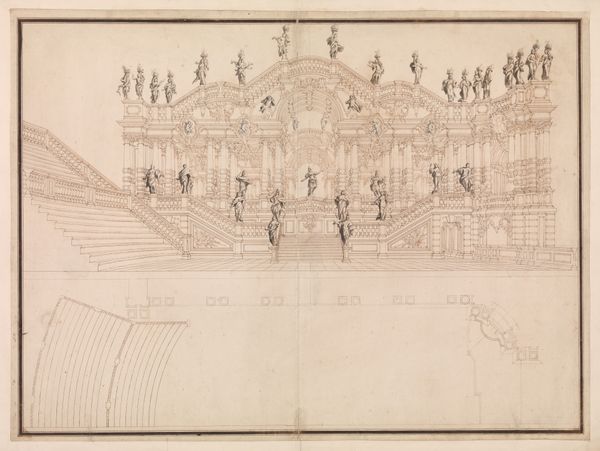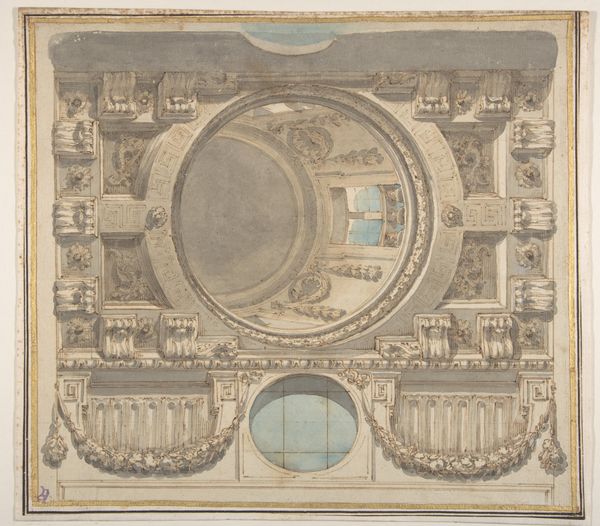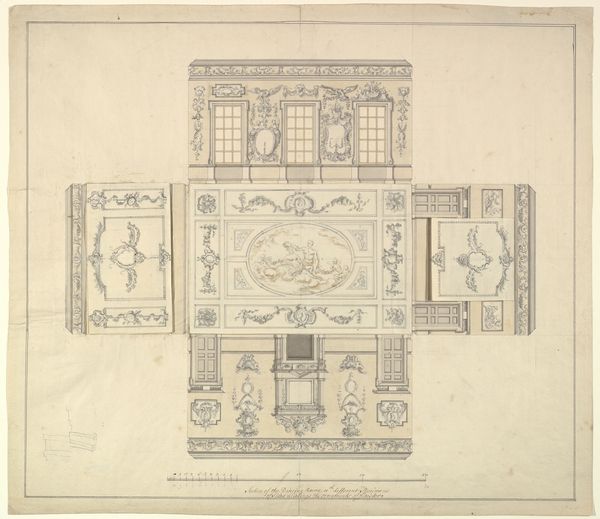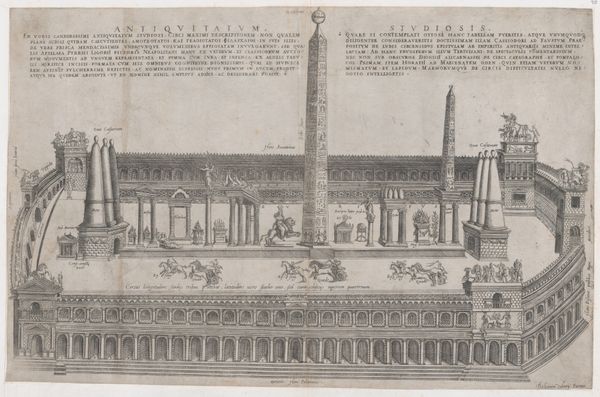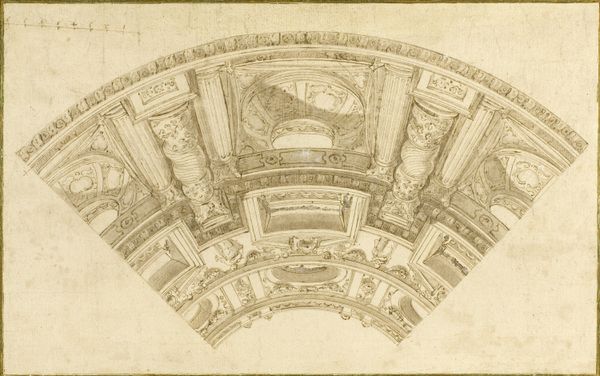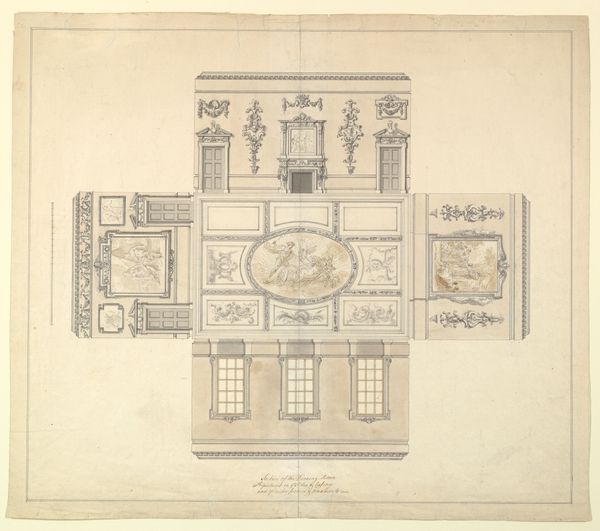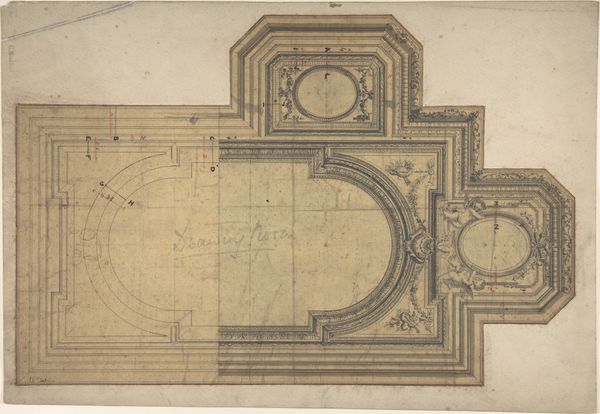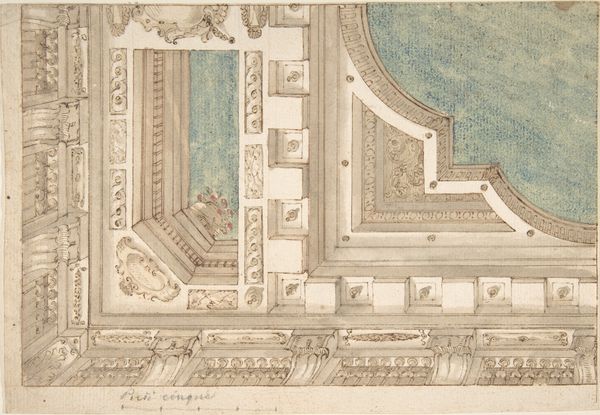
Birds Eye View of the Chateau and Grounds of Anet, from Les plus excellents bastiments de France 1607
0:00
0:00
drawing, print, architecture
#
drawing
# print
#
landscape
#
11_renaissance
#
architecture
Dimensions: Sheet: 15 3/4 x 19 11/16 in. (40 x 50 cm) Image: 8 5/16 x 18 11/16 in. (21.1 x 47.5 cm)
Copyright: Public Domain
Curator: Well, hello there. Here, we're looking at "Birds Eye View of the Chateau and Grounds of Anet, from Les plus excellents bastiments de France," dating back to 1607. It's a drawing, a print, showcasing the architecture and landscape of the time by Jacques Androuet Du Cerceau. Editor: Gosh, that's quite the mouthful of a title, isn't it? The artist clearly spared no ink detailing every brick. But if you ignore that, it almost feels…oppressive. I’d hate to live in such a hyper-ordered space! Curator: Oppressive how? The structured gardens and architectural layout represented the height of Renaissance ideals of control and order. This wasn't just a house; it was a statement about power, influence, and man's dominion over nature. Editor: Oh, I get the historical significance. But artistically speaking, it makes my soul feel a little cramped. Every tree meticulously placed, every hedge perfectly squared...it's as if beauty and natural form were concepts that made them cringe. It reminds me of a wedding cake after someone already had a piece. Curator: The artist was very intentional; symmetry, perspective, and meticulous detail highlight architectural innovation. Think of the social context! Royal commissions of architectural engravings legitimized status, wealth, and culture through imagery distributed to elites throughout Europe. These images helped define French architecture of this period. Editor: Makes sense...It’s hard to see beyond the fact that if a single leaf dared to fall out of place, somebody's head would roll! But yes, seeing it as a sort of influencer marketing of its time… a design brochure that went viral? Kind of neat! Curator: Exactly. These weren't postcards. They were vital documents in the ongoing cultural and political conversations. And they are wonderful time capsules for social historians. Editor: In the end, this work has given me pause. Beyond the manicured lawns and perfectly planned estate of 17th century France, it has also showed that behind all that show there was substance. Thanks for clarifying some of that for me! Curator: My pleasure. There's so much to unpack within such a seemingly simple architectural study. Art and architecture aren't simply static images, after all; they're active participants in a society's discourse.
Comments
No comments
Be the first to comment and join the conversation on the ultimate creative platform.
